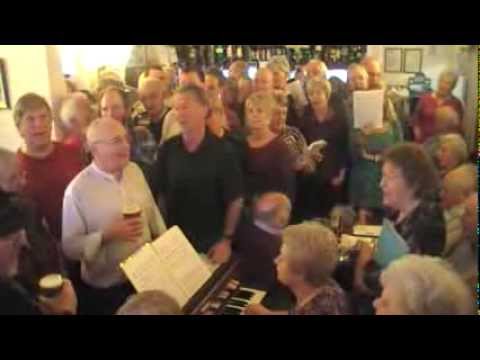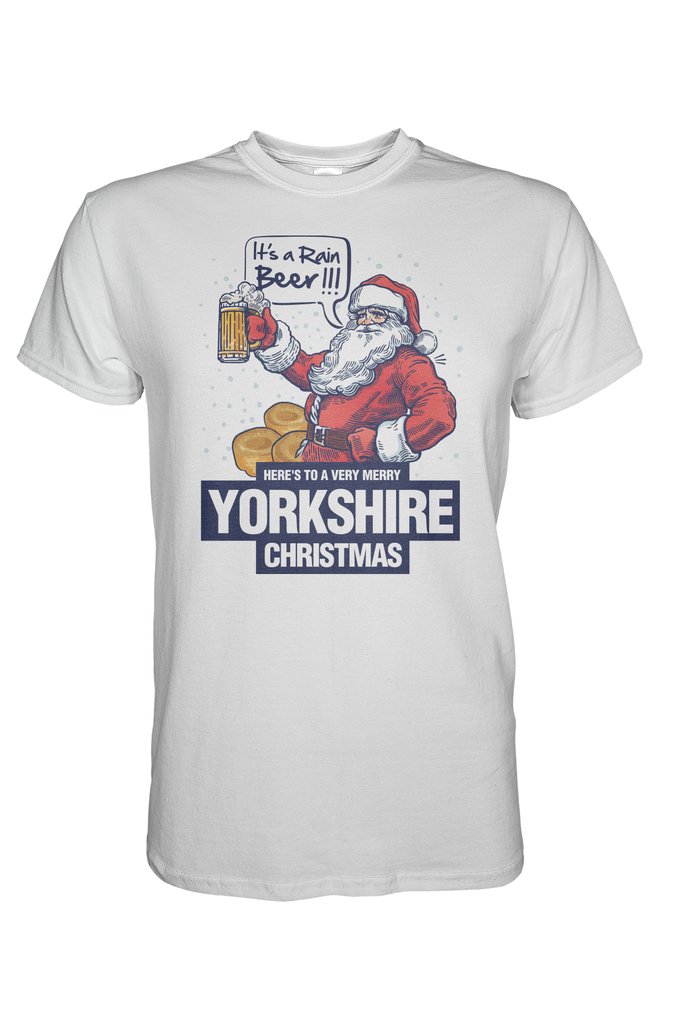“Nowhere are the traditions of Christmas kept up with such splendour as in Yorkshire.” (Visitor to the county 1812)
Yorkshire is a fantastic place to be all year round, but at Christmas it is extra special. It has always been an area full of tradition, none more so than over the festive period. Throughout history Yorkshire has provided some major contributions to Christmas and the festivities surrounding it.
Roman York

The origins of Christmas celebrations in Yorkshire date back as far as Roman Times and centred on the city of Eboracum. The Saturnalia festival which took place from around 17th – 25th December was dedicated to Saturn, the god of harvest and agriculture, which is something that resonated well with Yorkshire folk. The festivities included a relaxing of the normal Roman society rules. The courts were suspended, crime was more tolerated and even gambling was permitted. Masters would serve their slaves a banquet of food and singing in the streets was encouraged. Elements of the Saturnalia festival, such as over-indulgence, merriment and singing are still at the heart of our Christmas festivities today. These celebrations gradually changed from a pagan ritual to a Christian one, due to the spread of the faith throughout the Roman Empire during the 4th Century. The idea that the final day of Saturnalia, the 25th December also marked the day of Jesus’ birth and this was first recognised by Pope Julius I as Christmas started to take on a more religious theme.
Christmas in Medieval Yorkshire
Another strong influence on Yorkshire Christmases came from both the Anglo Saxons and the Vikings. The Danes’ Yule celebrations were also absorbed into the winter festivities when Yorkshire came under the Danelaw in the 9th Century. This placed more emphasis on marking the winter solstice, rather than celebrating Jesus’ birth as the Vikings were pagan. The word, “yuletide” is still associated with the festive season today and the celebrations lasted for around twelve days from the 21st December onwards.
Christmas celebrations only took a more Christian turn again after the Norman invasion of 1066, when Christmas was celebrated in the third week of December. The word “Christes Maesse” (Festival of Christ) was first used around this time and William the Conqueror declared himself King of England on Christmas Day 1066, which in his eyes was a further reason to celebrate, although probably not in the eyes of Yorkshire folk back then.
Religion on British and Yorkshire Christmases was pronounced further in the later Middle Ages, with church attendance and worship put at the forefront of the festivities.
Since the 1400s a tradition known as “The Devil’s knell” has taken place in the town of Dewsbury. On Christmas Eve the All Saints parish church bells toll once for every year since the birth of Christ. The peel is timed so that the last bell is rung exactly at midnight on Christmas Day. This ritual is done to remind Satan that Christmas resembles the beginning of his end. The ritual has only been missed during the Second World War, when church bells were silenced for national security.

Carol Singing
In Medieval times carol-singing was banned in churches because they disrupted the religious services, so the vocalists would have to go elsewhere. Over the centuries, this custom of carol-singing manifested itself in several ways. Some of them stood outside in a circle near a prominent landmark in the town or village. Others went from house to house collecting money and gifts from residents.
The sensible ones congregated in public houses and taverns, where the added warmth and the availability of ale helped to loosen their tongues in song. One such carol-singing tradition still takes place each year at the Royal Hotel in the village of Dungworth, near Sheffield. Over the past two hundred years singers have congregated here every Sunday from mid-November to Boxing Day at noon for a two hour sing. They sing a mixture of traditional carols and Yorkshire songs, which are sung in the pub each week during the countdown to Christmas. Other similar events across South Yorkshire take place in various pubs and venues from mid-November onwards.

Yorkshire Christmas Food
Yorkshire has also made several contributions to what we eat at Christmas time. The first turkeys were brought over to England from the Americas by Yorkshire explorer William Strickland in 1526. Originally from Marske, he built estates at both Wintringham in Ryedale and Boynton Hall near Bridlington with the profits he made from selling these exotic birds. William Strickland was the Bernard Matthews of his day! The Strickland family crest, which adorns both of these residencies is in the shape of a turkey, something which is widely acknowledged as the first ever depiction of the bird in Europe. Boynton village church lectern is also carved in the shape of a turkey instead of a traditional eagle in honour of Strickland. The custom of eating turkey on Christmas day would only become popular in the Victorian period, 250 years or so after Strickland’s death in 1598.

A natural addition to any Christmas dinner is traditional Yorkshire pudding, which forms an important area of the festive plate. Outside our great borders the debate rages as to whether to include them or not, but as we know in Yorkshire it’s compulsory! A slice of Wensleydale cheese can also be enjoyed with Christmas cake and is a Yorkshire culinary tradition and said to date back to the 1890s.
The Yorkshire Christmas pie has its origins in the 17th Century and became popular during the Victorian period. The dish comprises of several game birds including turkey, goose, duck, grouse, pheasant and pigeon. These were layered with stuffing and encased in short crust pastry. Its links to the county came when they were made in the large kitchens of Harewood House. Naturally many of the birds which feature in the dish can be found on the Yorkshire moorlands. Yorkshire Christmas pie was first served at Windsor Castle in 1858 and became a Royal favourite.
A Christmas Carol
The Victorian era saw a rejuvenation of Christmas celebrations, which had declined in the previous two hundred years, largely thanks to a general banning of the festival by the Puritans in the 1650s and other important religious dates in the Christian calendar such as Easter taking more prominence.
The 19th Century saw the emergence of similarities to how we celebrate Christmas today. Prior to 1837 and the accession of Queen Victoria to the throne there were no Christmas cards, crackers, trees or even holidays for workers, apart from on Christmas Day itself.
One very famous piece of literature was to change the festive season in the working class industrial towns of Yorkshire forever. ‘A Christmas Carol’ by Charles Dickens’ was published in 1843, had one of the most profound influences of how Christmas was celebrated and working class lives as a whole.
The common theme of the rich giving to the poor ran throughout the book. Ebeneezer Scrooge, the wealthy, mean industrialist becomes a changed man after being visited by the three ghosts of past, present and future. Later in the story he gives a turkey to Bob Cratchitt; one of Scrooge’s poor, underpaid employees and learns the importance of being kind to his workers, especially at Christmas.
The middle and upper classes of Victorian Britain who either read the novel, or saw it performed through numerous stage adaptations had their consciences pricked about their own treatment of the poor. The book was a factor in a boom of charitable work done by the rich philanthropists over the festive period in the years that followed and even helped to sow the seeds of social reform. One of these measures was to make the day after Christmas a new public holiday, where the workers would open up boxes given to them by their bosses. This became known as Boxing Day.
While Charles Dickens was not from God’s Own County his many trips to the then North Yorkshire town of Malton to see his solicitor friend, Charles Smitheson had a great influence on A Christmas Carol. Scrooge’s counting house was based on his solicitor’s offices in the town, while St Leonard’s church is also represented in the story.

Yorkshire can claim numerous contributions to British celebrations at Christmas time. From bringing the first turkeys to England, to carrying on ancient rituals and influencing A Christmas Carol, it remains a special place in which to celebrate the festive season.



